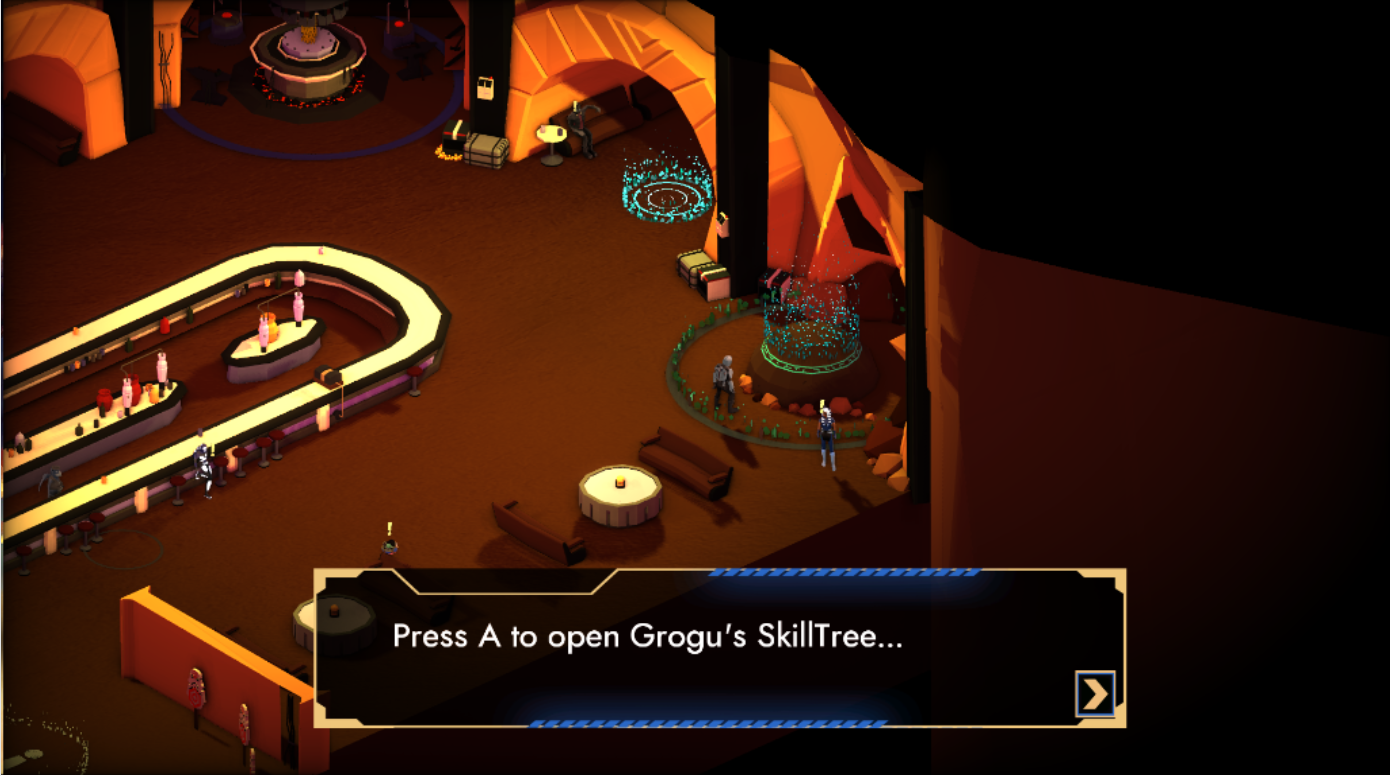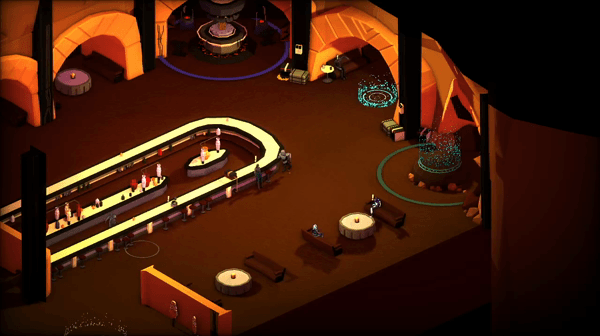Roger Pérez
Design
Project Overview
During these last five months I have been working as a designer on this magnificent project, from the discovery phase of the game to the final polishing sprints. Throughout the development of TM: Ashes of the Empire I have participated in the first concept designs, visual effects, music composition and some mechanics.
This has been my first experience in developing a video game of this magnitude, so it brought me a lot of knowledge about teamwork, team management during the few weeks I was scrum master and new design and development skills. On the other hand, I think I gained a lot of experience in some fields and most importantly, the motivation to continue working on new projects and learn more about game design.
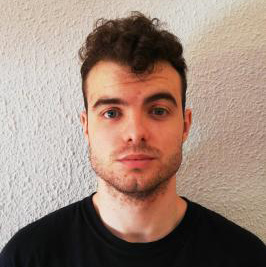
My contribution
Researchs
The discovery week was one of the most intense of all the project, the designers where assigned to research and analysie differents mechanics and systems that were possible to add in our game. During this week I was researching for Progression Trees, Summonings and Companions. At the same time I formed a small team with two others designers to define the narrative background of the game.
- Companion: the companion mechanic was one of the first to get in mind of all designers, with the presence of Grogu, the little youngling in The Mandalorian series we thought that it was one character the people could expect from our game. So finally we defined Grougu as a companion as a primary mechanic of our game due the engagement and expectation that would generate to the player narratively speaking.

- Summoning: summoning was an especific and rare mechanic that we had in mind my mate Pol Galan and I, this idea was originated watching the first episode of The Mandalorian when he meets with the bounty hunter android. Putting together some analyses we decided that although it was so interesting and funny mechanic it would mean a large extra chunk of work and its uses could be covered by other mechanics in gameplay or characters in narrative, so we discarded this as a primary or secondary mechanic.

- Talent Trees: commonly present in a lot of games, specially RPGs, the talent trees was one way to represent the progress of the player and give diversity to the gameplay. Once the sub-classes and loadouts mechanics were discarded by others designers I though it should be a must in our game and finally it was included as core mechanic. I created three differents trees exploring different areas and dynamics of our game, unfortunately the first designs of these talent trees were of not use cause a lot of content was modified later in the development.
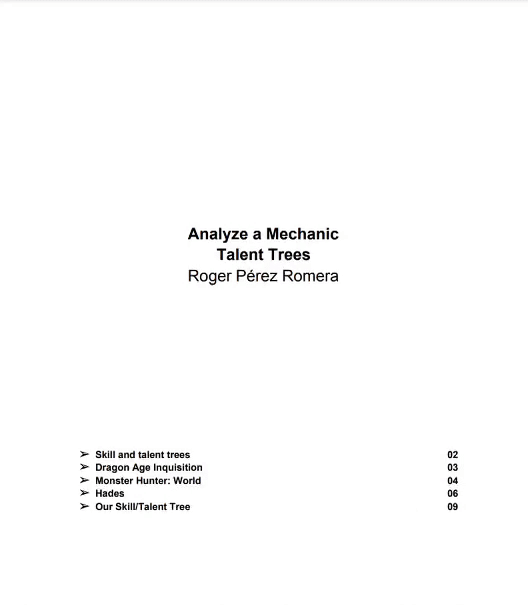
- Narrative: with two other students we took a hard look on The Mandalorian lore and all the possibilities we had in our hands to use in the game. Once we had clear which characters and events we wanted to show in our game I was in charge of redacting the main journey the player would do as Din Djarin.
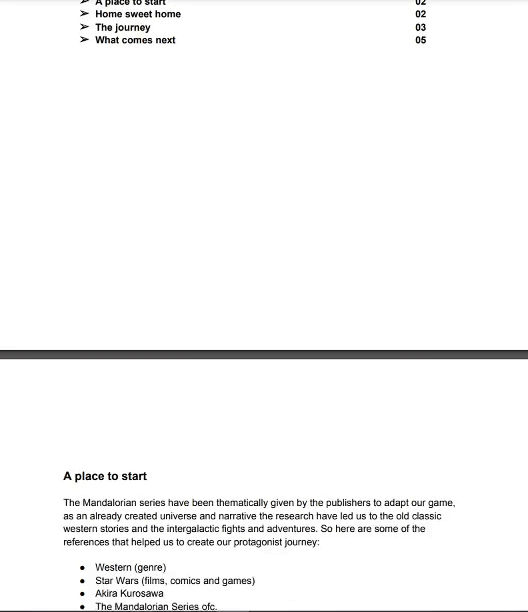
Early concepts designs
Althouhg I was a designer for most of the project I was an art proxy during some time to help with the first characters designs of Grogu and Mando and created the blockout for the Bantha enemy. During the same time as art proxy I created the moodboards which settled the art style of the game, the protagonist mood and some scenarios feels.
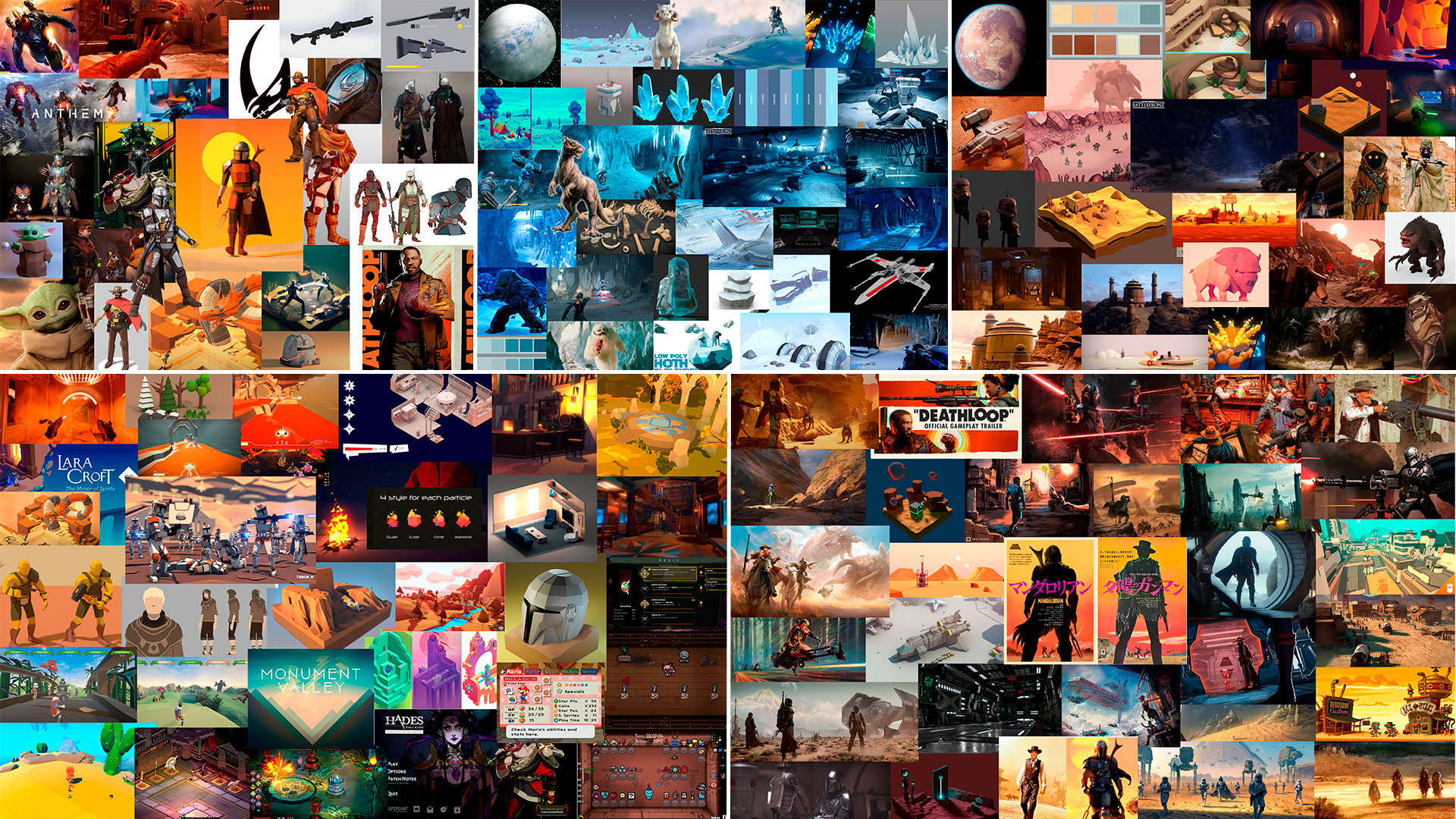
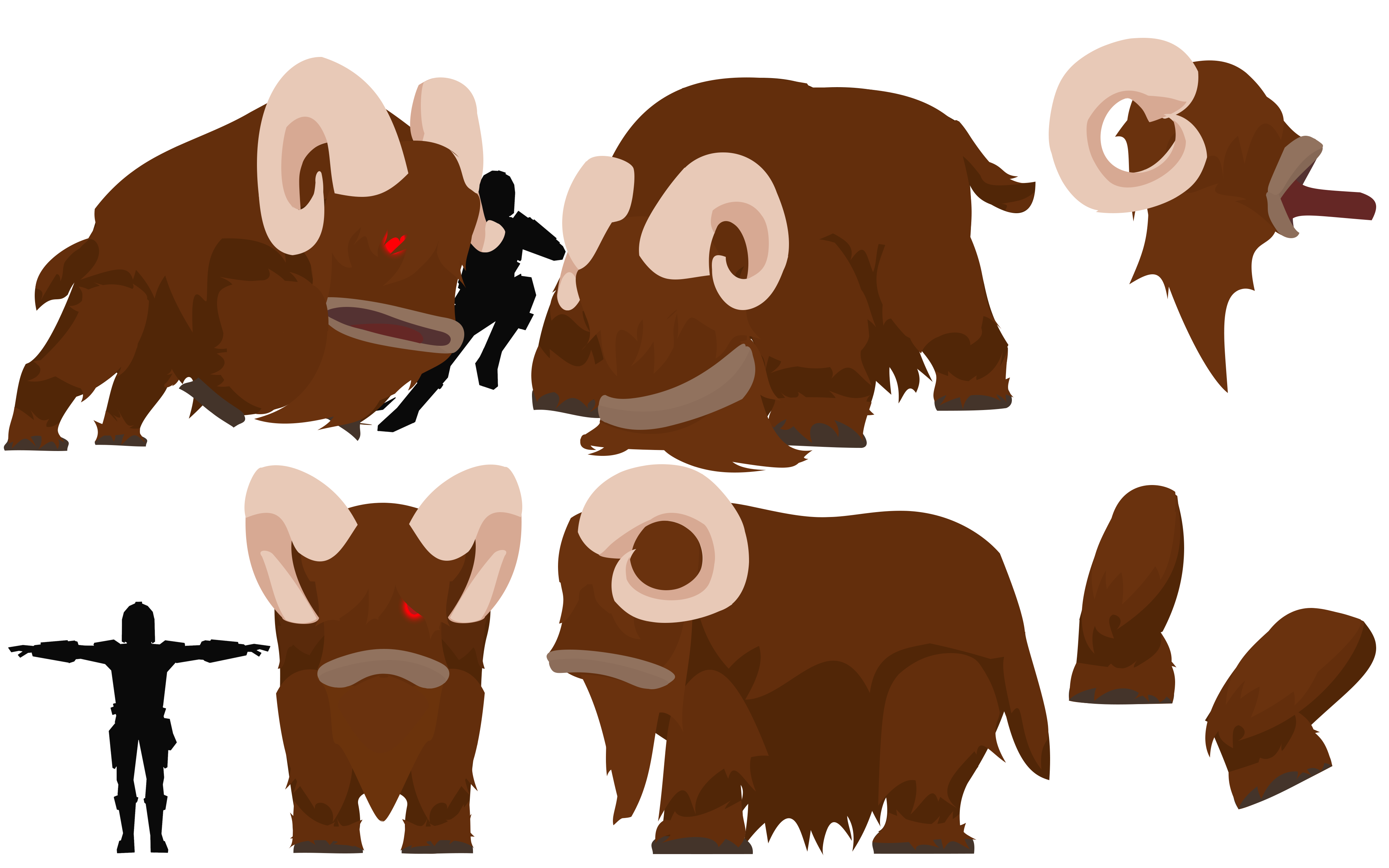
VFX; Particles
My main task during most of the project was the design and creation of the particles that would give life to all the scenery, characters, enemies and feedback to the player.
First I did a little research on our final art style for the game and the possible results we could achieve with our particle system, then while our particle system was being polished I started making drafts with Unity to understand the first concepts of how they were going to be in the game. Then started the creation process in our engine, we created an excel to control all the scrum team requests and I was in charge with my design manager to manage all the particle systems that we introduced in the game. For the implementation of each particle system I had the help of different coders.
To see an extended showcase of the particles in our game you can see the following video in our twitter account or play TM: Ashes of the Empire:
Here is a showcase of the particles of our project! Tell us what you think! Your feedback is very appreciated 😁
— Virtual Ragnarok (@RagnarokVirtual) May 14, 2021
YouTube URL - https://t.co/WAShYt3jfk
Teaser made by our Designers @Cheelgeneer & @Petelgeuse_YY#starwars #teaser #indiegames #games #particles #gamesystem


Interactive Music
I was in charge of implementing for the first time interactive music in the game using Wwise, it was difficult weeks at the beginning because my experience with Wwise was null but once I learned how to handle the files and how the software worked I could start creating some music segments. The original tracks were made by some music assistants outside the project because no member of our team had any knowledge to produce music. With these tracks we generated some first music segments for the main menu, the HUB and the run. The run music worked with the "explore" or "fight" states and changed automatically, at the same time the combat music had variations depending on the player's health. During this time creating musci I made some research on audio compression to optimize memory in-game and I settled the compressed settings for all our music and some SFXs.
Later on more music was added and the first approach was improved and modified.
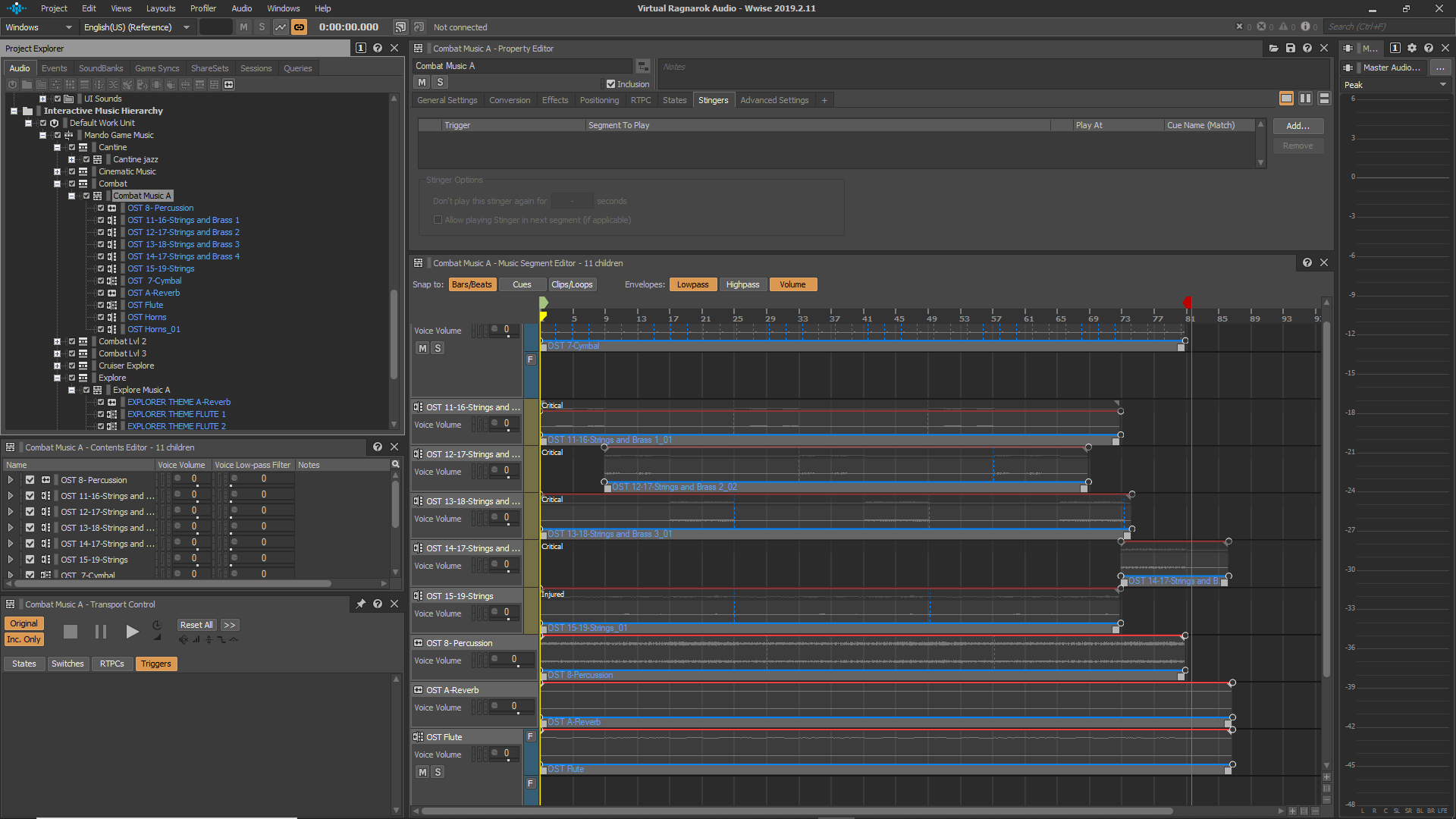
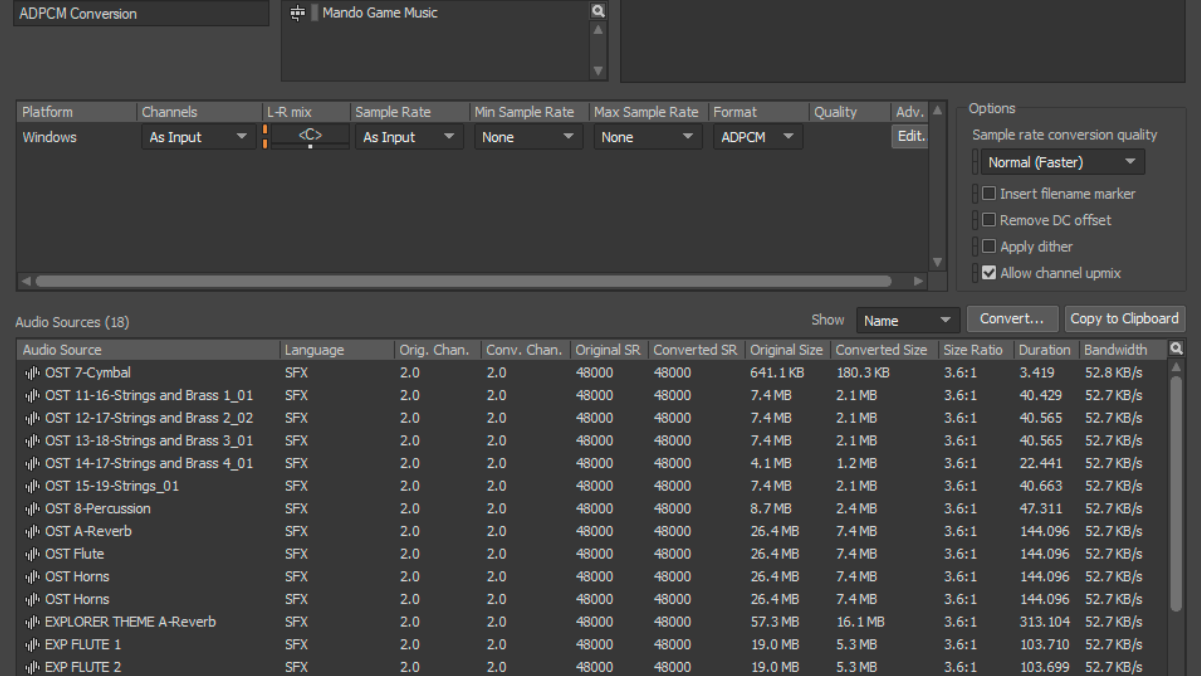
Minor contributions
Aside from the main tasks on the project I took charge of other things that needed reworks, updates or polish:
- HUB polish: at the final milestones I was in charge of the HUB, I supervised the implementation of final art and making sure to correct and rework on: NPCs animations, NPCs positions, interaction areas and the needed feedback to guide the player around the social area.
- Social link rework: during the progression in-game the character can improve the relationship with the NPCs in the HUB and them will offer extra content in form of dialogue or improvements depending on the level the player have. These gave us problems at the way this content was displayed, the dialogues could be read all at once first till the limit of the next relationship level, what make the player pass and guzzle all the content in a few runs or it could become boring and frustating if you don't have the resources to level up the relationship but you don't get new dialogues. This level is increased by rewards in the run, so we make the interactions with the NPCs limited to one for each NPC each tiem you get in the HUB reducing the possibilities of a player without new content in the HUB.
- Feedback: as a member of the feedback team during the project I dedicated time thinking on differents ways to give feedback to the player as particles, UI animations, audio, animations or mesh changes. Some examples I have worked on are the impact feedback of the player when receives damage, all kind of impact on enemies and projectiles and the notification of some abilities when enabled.
